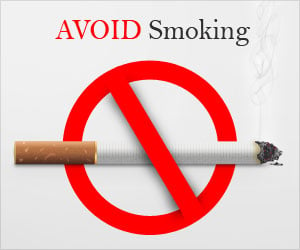- Smoking-related lung cancer claims approximately 1.5 million lives annually worldwide
- Inhalation of cigarette smoke is the main cause of the rise in lung cancer cases, both actively and passively
- India implemented the Cigarettes and Other Tobacco Products Act in 2003 to control tobacco consumption
- The Act prohibits tobacco advertising, mandates warning labels, bans smoking in public places, and restricts sales to minors
- The Act also regulates packaging, contents, and advertising of tobacco products, and imposes penalties for non-compliance
The History of Smoking Causing Cancer
Since the late 1930s, there were population studies, animal experimentation, and cellular pathology studies that linked the consumption of tobacco smoke with respiratory problems which invariably led to lung cancer. With further research throughout the subsequent decades, consensus about the harms of cigarettes began to form among medical circles and tobacco companies. The United States Surgeon General’s Report of 1964 that directly linked cigarette smoking to lung cancer was the turning point that led to legislation mandating the now ubiquitous warning label on the side of the packaging to inform the public that the very product they consume frequently, could kill them.Assessment of implementation and compliance of (COTPA) Cigarette and Other Tobacco Products Act (2003) in open places of Delhi
Go to source) (2✔ ✔Trusted Source
Murli S. Deora v/s. The Union of India
Go to source).
How COTPA Regulates Tobacco Consumption
The COTPA is the end all be all when it comes to Indian tobacco control laws. Some of its salient features are:Prohibition of Advertisement
The Act, under Section 5, strictly prohibits the advertisement of cigarettes and other tobacco products through various forms of media, such as print, electronic media, hoardings, sponsorship of events, promotional activities, and the Internet. It aims to prevent the promotion of tobacco products, especially among the youth.Warning Labels
Section 7 of the Act mandates that all cigarette and tobacco product packages must carry pictorial health warnings that cover at least 85% of the principal display area. The warnings include both pictorial and textual messages that convey the harmful effects of tobacco use.Prohibition of Smoking in Public Places
The Act, through the scope of Section 4, prohibits smoking in public places, including offices, educational institutions, hospitals, restaurants, public transport, and more. It aims to protect non-smokers from the harmful effects of passive smoking. Specific provisions.Prohibition of Sale to Minors
Section 6 of COTPA strictly prohibits the sale of cigarettes and other tobacco products to individuals below the age of 18 years. It aims to discourage the initiation of tobacco use among minors. It also imposes penalties on those who sell or distribute tobacco products to minors.Regulation of Packaging and Contents
The Act regulates the packaging and contents of cigarettes and tobacco products by specifying the requirements for packaging and labelling of tobacco products, including the size and placement of health warnings, prohibition on misleading labels, and restrictions on claims related to reduced harm or other promotional statements in Section 7.Prohibition of Direct and Indirect Advertising
The Act not only prohibits direct advertising but also indirect advertising of tobacco products, such as brand promotions through sponsorships, endorsements, and product placements under Section 5 (3✔ ✔Trusted SourceThe history of the discovery of the cigarette-lung cancer link: evidentiary traditions, corporate denial, global toll FREE
Go to source).
Licensing and Registration
The Act requires manufacturers, wholesalers, and retailers of tobacco products to obtain licenses and register with the appropriate authorities to engage in manufacturing, storing, and distributing tobacco products. Section 12 specifies the application process, conditions for granting licenses, and the authority responsible for issuing licenses.Enforcement and Penalties
Section 20 of the Act empowers designated enforcement authorities to monitor and enforce compliance with its provisions. It also specifies penalties for various offenses under the Act, which include fines and imprisonment. It also empowers the authorities to cancel or suspend licenses in case of non-compliance.References:
- Assessment of implementation and compliance of (COTPA) Cigarette and Other Tobacco Products Act (2003) in open places of Delhi - (https://www.ncbi.nlm.nih.gov/pmc/articles/PMC7491856/)
- The history of the discovery of the cigarette–lung cancer link: evidentiary traditions, corporate denial, global toll FREE - (https://tobaccocontrol.bmj.com/content/21/2/87)
- Legislation by Country India - (https://www.tobaccocontrollaws.org/legislation/india)
Source-Medindia











